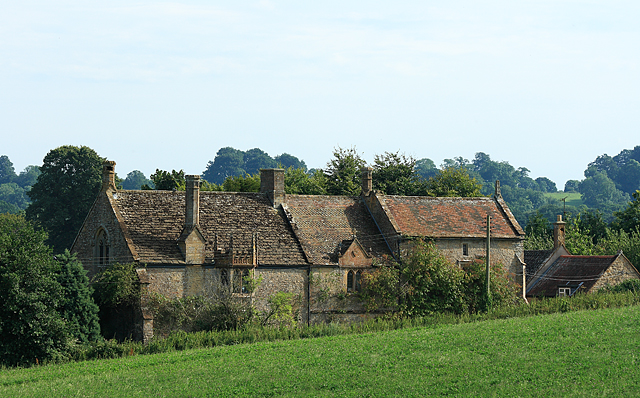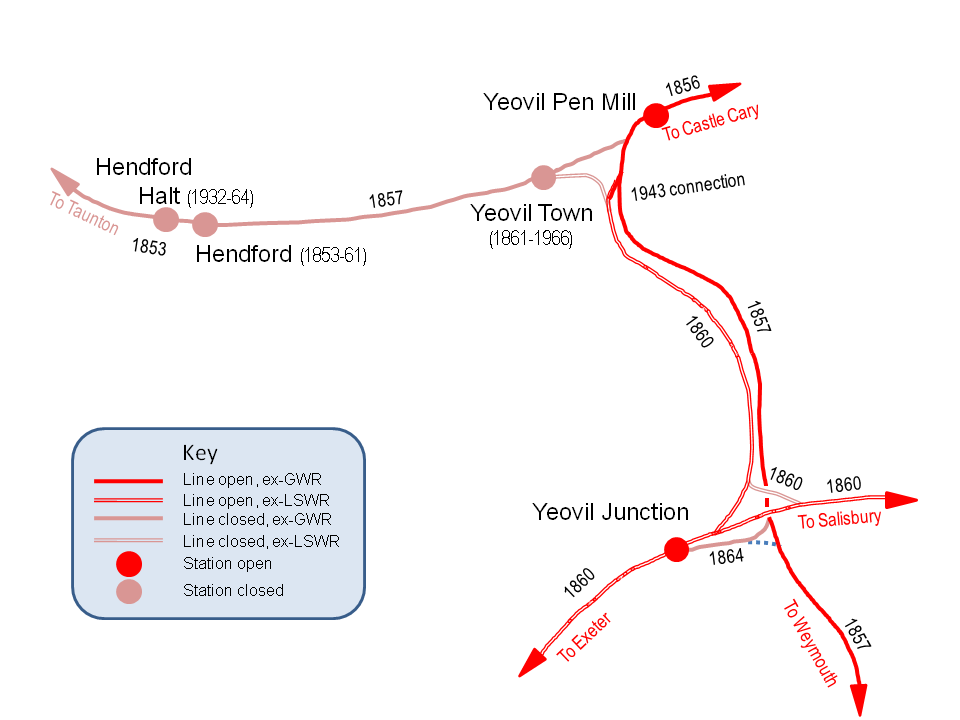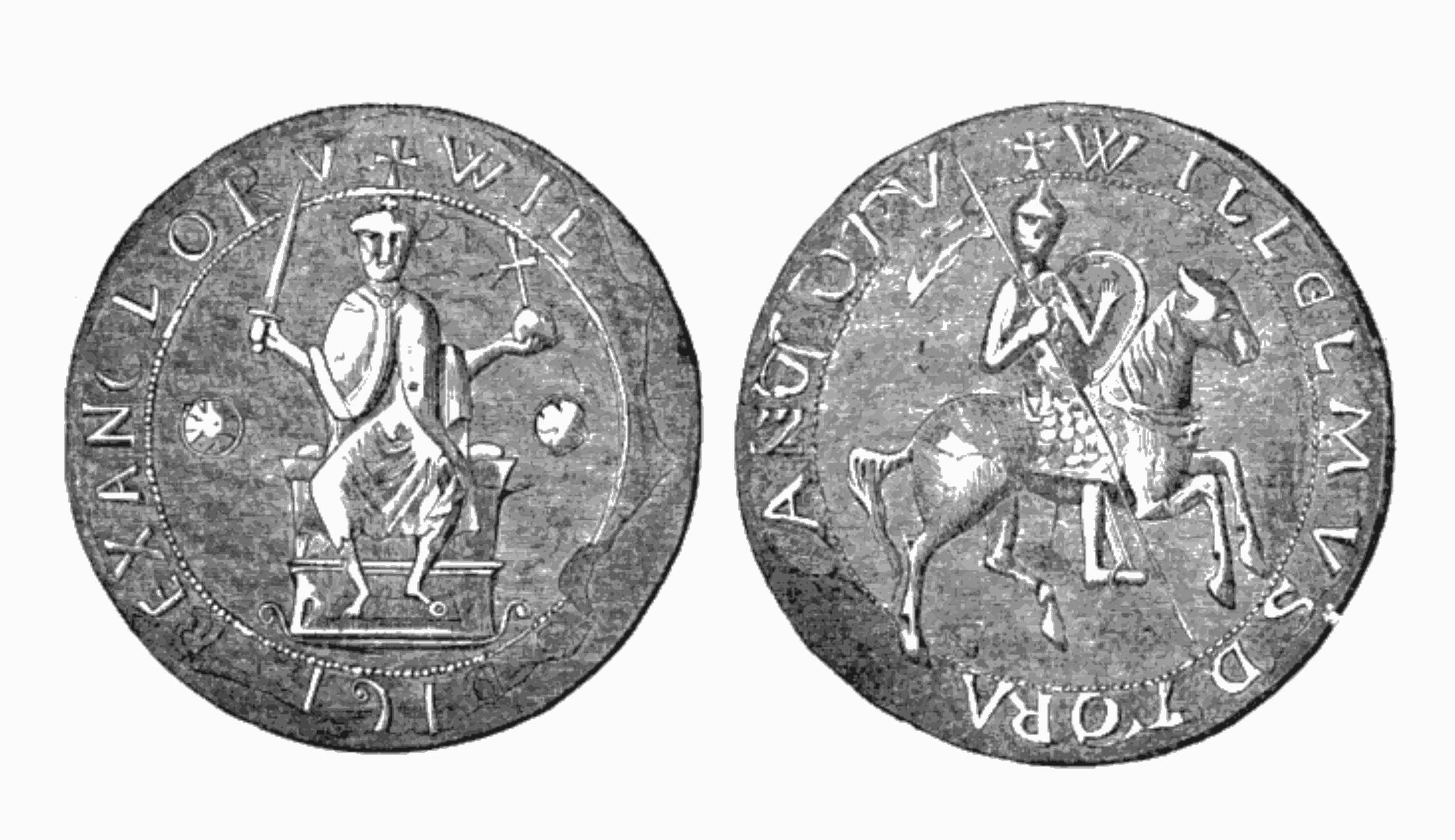|
Naish Priory
Naish Priory in East Coker, Somerset, England, contains portions of a substantial house dating from the mid 14th century to around 1400. Emery says the building was not a priory as it had been termed by the late 19th-century owner Troyte Chafyn Grove, and there appears no evidence of ownership by a religious house or the residence of a large community of monks on the site. However, there is evidence of a dormitory and communal living dating from the 14th century, and the extant buildings grew on a foundation that had religious obligations by way of chantry to the de Courtenay Earls of Devon from at least 1344. It has been designated as a Grade I listed building, with the attached Priory Cottage and northern boundary railings. Naish Priory and surrounding farm land ("Naish") is a medieval period establishment of Romano–British and Saxon origin, sited directly equidistant between two Roman Villas. During Saxon times it formed part of the estate of Gytha Thorkelsdóttir, which pass ... [...More Info...] [...Related Items...] OR: [Wikipedia] [Google] [Baidu] |
East Coker
East Coker is a village and civil parish in the South Somerset district of Somerset, England. Its nearest town is Yeovil, to the north. The village has a population of 1,667. The parish includes the hamlets and areas of North Coker, Burton, Holywell, Coker Marsh, Darvole, Nash, Keyford as well as the southern end of the Wraxhill area. History A Roman villa was discovered in East Coker in the 18th century and subsequent excavation has discovered artefacts including a mosaic, however further work is needed to fully identify the plan of the building. In the Domesday Survey of 1086 the villages of West and East Coker were known as ''Cocre''. The parish was part of the hundred of Houndsborough. In 1645, soon after the English Civil War, 70 people in the village died of the plague. In 2011 South Somerset Council published a plan for local housing which included a proposal for the construction of 3,700 new houses on land between East Coker and Yeovil. Local opposition has been ... [...More Info...] [...Related Items...] OR: [Wikipedia] [Google] [Baidu] |
House Of Plantagenet
The House of Plantagenet () was a royal house which originated from the lands of Anjou in France. The family held the English throne from 1154 (with the accession of Henry II at the end of the Anarchy) to 1485, when Richard III died in battle. Under the Plantagenets, England was transformed. The Plantagenet kings were often forced to negotiate compromises such as Magna Carta, which had served to constrain their royal power in return for financial and military support. The king was no longer considered an absolute monarch in the nation—holding the prerogatives of judgement, feudal tribute, and warfare—but now also had defined duties to the kingdom, underpinned by a sophisticated justice system. A distinct national identity was shaped by their conflict with the French, Scots, Welsh and Irish, as well as by the establishment of the English language as the primary language. In the 15th century, the Plantagenets were defeated in the Hundred Years' War and beset with soc ... [...More Info...] [...Related Items...] OR: [Wikipedia] [Google] [Baidu] |
Archbishop Of Canterbury
The archbishop of Canterbury is the senior bishop and a principal leader of the Church of England, the ceremonial head of the worldwide Anglican Communion and the diocesan bishop of the Diocese of Canterbury. The current archbishop is Justin Welby, who was enthroned at Canterbury Cathedral on 21 March 2013. Welby is the 105th in a line which goes back more than 1400 years to Augustine of Canterbury, the "Apostle to the English", sent from Rome in the year 597. Welby succeeded Rowan Williams. From the time of Augustine until the 16th century, the archbishops of Canterbury were in full communion with the See of Rome and usually received the pallium from the pope. During the English Reformation, the Church of England broke away from the authority of the pope. Thomas Cranmer became the first holder of the office following the English Reformation in 1533, while Reginald Pole was the last Roman Catholic in the position, serving from 1556 to 1558 during the Counter-Reformation. ... [...More Info...] [...Related Items...] OR: [Wikipedia] [Google] [Baidu] |
William Courtenay
William Courtenay ( 134231 July 1396) was Archbishop of Canterbury (1381–1396), having previously been Bishop of Hereford and Bishop of London. Early life and education Courtenay was a younger son of Hugh de Courtenay, 10th Earl of Devon (died 1377), and his wife Margaret, daughter of Humphrey de Bohun, 4th Earl of Hereford and granddaughter of Edward I. He was said to have been born at the family's estate at Exminster.Lysons and LysonsParishes: Exminster – Exmouth ''Magna Britannia: volume 6: Devonshire'' Being a native of the west of England, Courtenay was educated at Stapledon Hall, Oxford, and after graduating in law was chosen chancellor of the university in 1367. Courtenay's ecclesiastical and political career began about the same time. Career Having been made prebendary of Exeter, of Wells and of York, he was consecrated bishop of Hereford on 17 March 1370,Fryde, et al. ''Handbook of British Chronology'' p. 250 was translated to the see of London on 12 Sept ... [...More Info...] [...Related Items...] OR: [Wikipedia] [Google] [Baidu] |
Windsor Castle
Windsor Castle is a royal residence at Windsor in the English county of Berkshire. It is strongly associated with the English and succeeding British royal family, and embodies almost a millennium of architectural history. The original castle was built in the 11th century, after the Norman invasion of England by William the Conqueror. Since the time of Henry I (who reigned 1100–1135), it has been used by the reigning monarch and is the longest-occupied palace in Europe. The castle's lavish early 19th-century state apartments were described by early 20th century art historian Hugh Roberts as "a superb and unrivalled sequence of rooms widely regarded as the finest and most complete expression of later Georgian taste".Hugh Roberts, ''Options Report for Windsor Castle'', cited Nicolson, p. 79. Inside the castle walls is the 15th-century St George's Chapel, considered by the historian John Martin Robinson to be "one of the supreme achievements of English Perpe ... [...More Info...] [...Related Items...] OR: [Wikipedia] [Google] [Baidu] |
Knight Of The Garter
The Most Noble Order of the Garter is an order of chivalry founded by Edward III of England in 1348. It is the most senior order of knighthood in the British honours system, outranked in precedence only by the Victoria Cross and the George Cross. The Order of the Garter is dedicated to the image and arms of Saint George, England's patron saint. Appointments are at the sovereign's sole discretion and are usually in recognition of a national contribution, for public service, or for personal service to the sovereign. Membership of the order is limited to the sovereign, the Prince of Wales, and no more than 24 living members, or Companions. The order also includes supernumerary knights and ladies (e.g. members of the British royal family and foreign monarchs). The order's emblem is a garter with the motto (Middle French for 'Shame on him who thinks evil of it') in gold lettering. Members of the order wear it on ceremonial occasions. History King Edward III founded the Ord ... [...More Info...] [...Related Items...] OR: [Wikipedia] [Google] [Baidu] |
Peter Courtenay
Peter Courtenay ( – 23 September 1492) was Bishop of Exeter (1478–87) and Bishop of Winchester (1487-92), and also had a successful political career during the tumultuous years of the Wars of the Roses. Origins Courtenay was the third son of Sir Philip Courtenay (d. 1463) of Powderham by Elizabeth Hungerford, daughter of Walter Hungerford, 1st Baron Hungerford (d. 1449), by his first wife Catherine Peverell, daughter of Sir Thomas Peverell, MP, of Parke and Hamatethy, Cornwall. He was a grandson of Sir Philip Courtenay (d. 1406) of Powderham, a younger son of Hugh Courtenay, 10th Earl of Devon (d. 1377). Courtenay was also a grand-nephew of Richard Courtenay (d. 1415), Bishop of Norwich, and a great-grand-nephew of William Courtenay (d. 1396), Archbishop of Canterbury. He came from a family of six brothers and four sisters. Career According to Horrox, Courtenay was admitted bachelor of civil law at University of Oxford in 1457, and continued his legal studies at the ... [...More Info...] [...Related Items...] OR: [Wikipedia] [Google] [Baidu] |
Naish Priory 2
Naish is a surname. Notable people with the surname include: *John Naish (shipbuilder) (died 1726), English shipbuilder to the Royal Navy * William Naish (artist) (1766/7–1800), English miniature painter * William Naish (Quaker) (1785–1860), English Quaker writer and abolitionist *John Naish (1841–1890), Irish lawyer and judge, Lord Chancellor of Ireland *J. Carrol Naish (1897–1973), American actor *Darren Naish, British palaeontologist and science writer *Robby Naish windsurfer and kitesurfer, also Naish kites, sails and boards See also * Naish District, Afghanistan *Naish languages The Naish languages are a low-level subgroup of Sino-Tibetan languages that include Naxi, Na (Mosuo), and Laze. Classification The Naish languages are: *Naish **'' Naxi'' **'' Na'' (Narua, Mosuo) **'' Laze'' In turn, Naish together with Nam ..., a lower-level language subgroup within the Sino-Tibetan family of languages {{surname, Naish ... [...More Info...] [...Related Items...] OR: [Wikipedia] [Google] [Baidu] |
Yeovil
Yeovil ( ) is a town and civil parishes in England, civil parish in the district of South Somerset, England. The population of Yeovil at the last census (2011) was 45,784. More recent estimates show a population of 48,564. It is close to Somerset's southern border with Dorset, from London, south of Bristol, from Sherborne and from Taunton. The aircraft and defence industries which developed in the 20th century made it a target for bombing in the Second World War; they are still major employers. Yeovil Country Park, which includes Ninesprings, is one of several open spaces with educational, cultural and sporting facilities. Religious sites include the 14th-century Church of St John the Baptist, Yeovil, Church of St John the Baptist. The town is on the A30 road, A30 and A37 road, A37 roads and has two railway stations. History Archaeological surveys have yielded Palaeolithic burial and settlement sites mainly to the south of the modern town, particularly in Hendford, where a ... [...More Info...] [...Related Items...] OR: [Wikipedia] [Google] [Baidu] |
Harold Godwinson
Harold Godwinson ( – 14 October 1066), also called Harold II, was the last crowned Anglo-Saxon English king. Harold reigned from 6 January 1066 until his death at the Battle of Hastings, fighting the Norman invaders led by William the Conqueror during the Norman conquest of England. His death marked the end of Anglo-Saxon rule over England. Harold Godwinson was a member of a prominent Anglo-Saxon family with ties to Cnut the Great. He became a powerful earl after the death of his father, Godwin, Earl of Wessex. After his brother-in-law, King Edward the Confessor, died without an heir on 5 January 1066, the ''Witenagemot'' convened and chose Harold to succeed him; he was probably the first English monarch to be crowned in Westminster Abbey. In late September, he successfully repelled an invasion by rival claimant Harald Hardrada of Norway in York before marching his army back south to meet William the Conqueror at Hastings two weeks later. Family background Harold ... [...More Info...] [...Related Items...] OR: [Wikipedia] [Google] [Baidu] |
Norman Conquest
The Norman Conquest (or the Conquest) was the 11th-century invasion and occupation of England by an army made up of thousands of Norman, Breton, Flemish, and French troops, all led by the Duke of Normandy, later styled William the Conqueror. William's claim to the English throne derived from his familial relationship with the childless Anglo-Saxon king Edward the Confessor, who may have encouraged William's hopes for the throne. Edward died in January 1066 and was succeeded by his brother-in-law Harold Godwinson. The Norwegian king Harald Hardrada invaded northern England in September 1066 and was victorious at the Battle of Fulford on 20 September, but Godwinson's army defeated and killed Hardrada at the Battle of Stamford Bridge on 25 September. Three days later on 28 September, William's invasion force of thousands of men and hundreds of ships landed at Pevensey in Sussex in southern England. Harold marched south to oppose him, leaving a significant portion of his ... [...More Info...] [...Related Items...] OR: [Wikipedia] [Google] [Baidu] |
William II Of England
William II ( xno, Williame; – 2 August 1100) was King of England from 26 September 1087 until his death in 1100, with powers over Normandy and influence in Scotland. He was less successful in extending control into Wales. The third son of William the Conqueror, he is commonly referred to as William Rufus ( being Latin for "the Red"), perhaps because of his ruddy appearance or, more likely, due to having red hair as a child that grew out in later life. William was a figure of complex temperament, capable of both bellicosity and flamboyance. He did not marry nor have children, which – along with contemporary accounts – has led historians to speculate on homosexuality or bisexuality. He died after being hit by an arrow while hunting, under circumstances that remain unclear. Circumstantial evidence in the behaviour of those around him raises strong, but unproven, suspicions of murder. His younger brother Henry I hurriedly succeeded him as king. Historian Frank Barlow ... [...More Info...] [...Related Items...] OR: [Wikipedia] [Google] [Baidu] |





